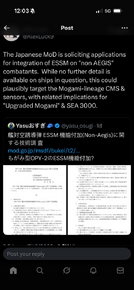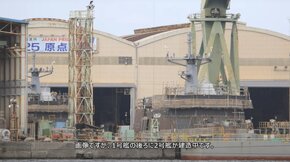Royal Australian Navy Discussions and Updates 2.0
- Thread starter OPSSG
- Start date
Specifications very scarce at this stage from what I can gather, but a new, much larger 'Vigilance-100' design by VARD has emerged for the Canadian 'Continental Defence Corvette' program to replace their 'Kingston class 'coastal defence vessels'. I understand this is a R.A.N forum but we speculate about foreign OPV designs all the time, in particular as of late, the forthcoming large, low-crew JMSDF design.
An older article somewhat detailing the 'Vigilance-75' flight I & II designs to illustrate how the design has evolved over time, presumably from continuing input from the RCN. Even this was a promising design for a ship presumably a little smaller than the Arafura class.
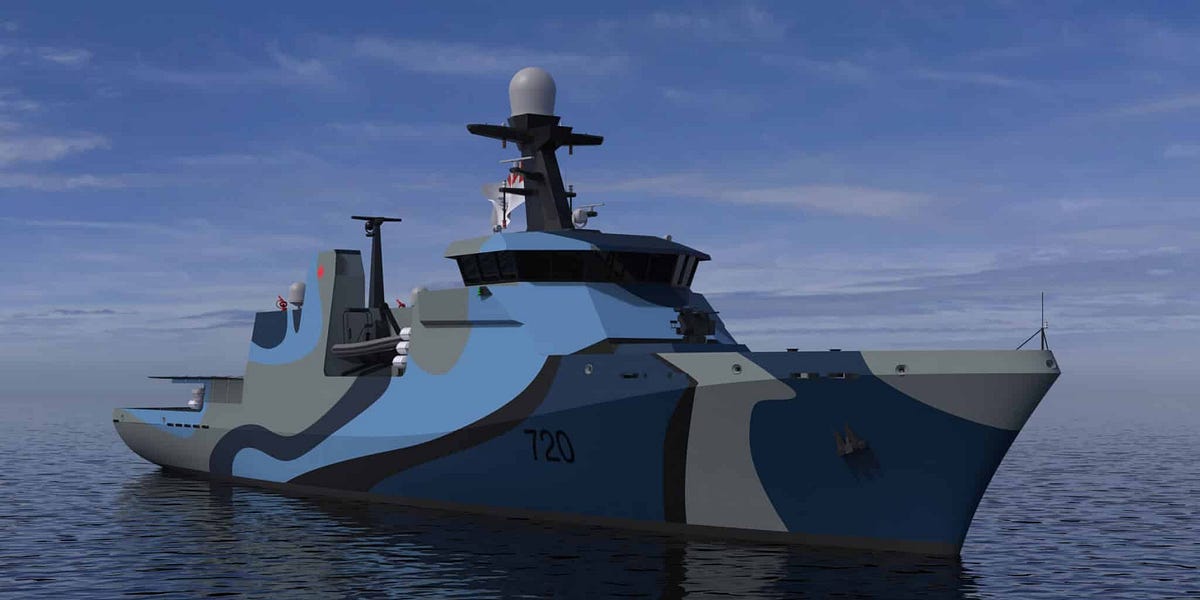
 noahscornerofrandomstuff.substack.com
noahscornerofrandomstuff.substack.com
An older article somewhat detailing the 'Vigilance-75' flight I & II designs to illustrate how the design has evolved over time, presumably from continuing input from the RCN. Even this was a promising design for a ship presumably a little smaller than the Arafura class.

Vard: Vigilance and expectations
The Vigilance concept continues a long line of waiting for something that won't exist
The new 100 design looks like a mini 054B.Specifications very scarce at this stage from what I can gather, but a new, much larger 'Vigilance-100' design by VARD has emerged for the Canadian 'Continental Defence Corvette' program to replace their 'Kingston class 'coastal defence vessels'. I understand this is a R.A.N forum but we speculate about foreign OPV designs all the time, in particular as of late, the forthcoming large, low-crew JMSDF design.
An older article somewhat detailing the 'Vigilance-75' flight I & II designs to illustrate how the design has evolved over time, presumably from continuing input from the RCN. Even this was a promising design for a ship presumably a little smaller than the Arafura class.

Vard: Vigilance and expectations
The Vigilance concept continues a long line of waiting for something that won't existnoahscornerofrandomstuff.substack.com
Not much info atm.
Crew requirement obviously the key, that's the greatest aspect of the Japanese design, 30 crew for its size is absurd compared to what else is on offer.The new 100 design looks like a mini 054B.
Not much info atm.
The Vard 75 flight I crew size is also 20-30. Flight II probably more.Crew requirement obviously the key, that's the greatest aspect of the Japanese design, 30 crew for its size is absurd compared to what else is on offer.
The 100m OPV by vard(likely the same/similar hull used for the vigilance 100.) has a core crew of 60-80.
What's the chances of cascading the CEAFAR, Mk41s, etc onto the big ships? Seems a logical step with the equipment becoming available. Choules recently had a radar installed so surely there's space for a launcher?Exactly.
With the big(ger) ships that don't have provision for VLS or too small a VLS ADL.has potential, especially if there is an expandable base combat system that is comparable with some modern, but now surpluses radars you happen to have.
We should be looking at what it would take to install the masts from the ANZACs and ADL on the LHDs, maybe the AORs and Arafuras.
OldTex
Well-Known Member
But the SWAP (space, weight and power) is just one of the considerations. There is also the weapon magazine, fire suppression, CMS, manning (operators and maintainers) and others to be considered.What's the chances of cascading the CEAFAR, Mk41s, etc onto the big ships? Seems a logical step with the equipment becoming available. Choules recently had a radar installed so surely there's space for a launcher?
The big ships and the OPVs have the same core CMS as the ANZACs and my original post was about the ADL, basically a slant deck housing for Mk-41 missile canisters.But the SWAP (space, weight and power) is just one of the considerations. There is also the weapon magazine, fire suppression, CMS, manning (operators and maintainers) and others to be considered.
Perhaps, but they don’t exist today in an operational state, have they been fitted to a real warship and live fired as IRIS-T now has? To my knowledge no-one has ordered them and so is the German appetite to be an orphan operator of such any greater than ours? ExLS requires a Mk.41 VLS installation which this class of ship doesn’t have. If it could fit Mk.41 it wouldn’t need either ADL or ExLS.As a concept demonstration, great. As a solution for increasing the missile depth on a vessel, no great. For an uparming solution the Exls and those sort of launcher solutions cam provide more missiles for less used space.
ESSM is not a quick bolt on solution even if you had a few spare adaptive deck launchers in your inventory. Check out the Japanese program to put ESSM on a ship that DOES have Mk.41 for example…
Very true, I expect many of these points is why Germany spent 10 months studying and working on this project before they ‘plonked’ a missile launch system on their available deck space.Top weight ALWAYS matters, as the Japanese found out in the 1930s. There is no point in having a very heavily armed ship if it can’t survive weather normally found at sea because its stability is insufficient.
More missiles are fine, but they need to be mated to sensors which enable their use. Arafura, for example, doesn’t have such sensors.
The upper deck of any surface combatant is a very much planned and competed for area. To prevent EM interference between sensors, and such things as unplanned EMF generated initiation of warheads, the whole thing is extremely carefully modelled and the interactions studied. Just plonking something down on its deck is likely to have a number of unplanned effects,which could be extremely serious. That is much less of an issue with something like an LHD; or in the case of the USN an independence class LCS, which have less space constraints (and not the same level of EMR generation).
I would expect nothing less from the RAN were they to consider up-arming any of their vessels, as to the integration into combat systems, for higher end systems absolutely true but there are numerous standalone that are designed to do that in the absence of such sensor or combat systems.
Such are available from a wide variety of vendors from the US / Germany, France, Israel and so on.
We “know” for example RAN has investigated (at least to some degree) naval C Dome. We know that RAN planned to integrate a standalone “second channel of fire” SIMBAD-RC solution on the ANZAC class before proceeding with the CEAFAR / ESSM combination ASMD upgrade. We know RAN carried RBS-70 into a war-zone aboard her LPD’s so there is precedent for wartime contingency and we know that RAN has long used Phalanx as a system capable of operating independently of the CMS and main sensors if required.
As with the USMC deck launched HIMARS trials and now Army’s 1 Armoured Regiment “trials” unit, I would be very happy to see a similar RAN unit conducting some advanced trials to understand what “might” be able to be achieved in the way of utilising existing systems to asymmetrically enhance our capability compared to now.
As an example ADF (including RAN) has APKWS rockets in-service on a number of platforms. They are proving very effective in the counter-UAS role in active service today by other users and we most definitely are lagging behind in C-UAS capability, yet are showing precious little inclination to adapt…
Similarly I recall Ukraine operationally employing a Javelin missile in an anti-ship role, early in the war. USV’s are a problem for RAN just like everybody else I would imagine…
We all moan about lacking this capability or why are we buying that, but a problem I see and am concerned about moreso is an organisation that isn’t anywhere near as creative with the employment of it’s existing capability as it might be and what advantages might lie in such “adventurous” spirit?
Last edited:
I think the only Japanese ships with ESSM so far are the AGEIS ships, the MOGAMIs have not yet had ESSM fitted/integrated to my knowledge.Perhaps, but they don’t exist today in an operational state, have they been fitted to a real warship and live fired as IRIS-T now has? To my knowledge no-one has ordered them and so is the German appetite to be an orphan operator of such any greater than ours? ExLS requires a Mk.41 VLS installation which this class of ship doesn’t have. If it could fit Mk.41 it wouldn’t need either ADL or ExLS.
ESSM is not a quick bolt on solution even if you had a few spare adaptive deck launchers in your inventory. Check out the Japanese program to put ESSM on a ship that DOES have Mk.41 for example…
Doe's the Japanese NAVY have their own SAM?
Japan recently upped its ESSM production capabilities. Looks like they are committing to ESSM for other ships. I think previously RAM was their go to.ESSM is now to be integrated on JSMDF “non-AEGIS” ships… Courtesy of X.
Automatic assumption this is for VLS armed Mogamis and perhaps FFM…
LHDs, AOR I believe have 9LV. I thought Choules maybe too, but apparently not.. HMAS Choules fitted with CEAFAR radar - Australian Defence MagazineThe big ships and the OPVs have the same core CMS as the ANZACs and my original post was about the ADL, basically a slant deck housing for Mk-41 missile canisters.
First 2 JMSDF OPVs due for launch next month, pretty rapid pace with an additional 2 due in March.Crew requirement obviously the key, that's the greatest aspect of the Japanese design, 30 crew for its size is absurd compared to what else is on offer.
Youtube - konohiroisora channel
Attachments
-
277.7 KB Views: 2
Going Boeing
Well-Known Member
Can the RAN’s stocks of ESSM Block 1 be upgraded to Block 2 level?
Define upgrade. Pretty much the only part that is the same is the rocket body, at least in size. The cheapest part. IF we are going to all the trouble of doing that, the we might as well make more rocket motors, and double our total inventory. As I understand it, the rocket motor is one of the parts we can produce locally.Can the RAN’s stocks of ESSM Block 1 be upgraded to Block 2 level?

Australia primes local production of solid rocket motors for its ammo
Subsidiaries of major global defense firms are already lining up for the business, as Canberra seeks to boost its ammunitions stocks.
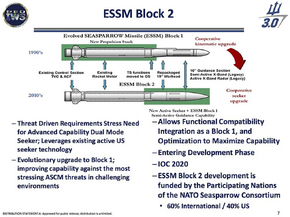
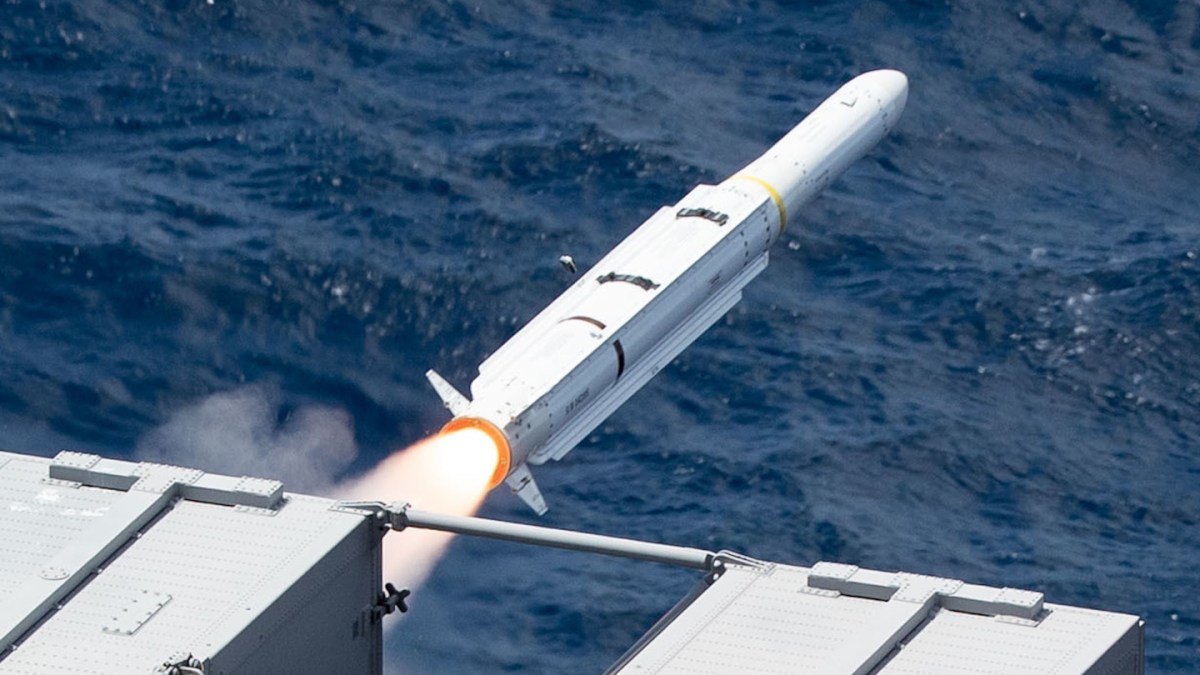
Evolved Sea Sparrow Missile Successor Sought By Navy
Evolving aerial threats are driving demand from the Navy and 11 U.S. allies for an improved naval anti-air missile.
I presume that Blk I will be in the national stockpile. If we run low, then we can carry a mix of blk I and Blk II. Nothing really wrong with Blk I. It does its job, if you are depleting your magazine, and threats are getting close then blk 1 is still very capable for that. Given the commonality, it would be worth keeping blk I operational. The advantages of Blk II are particularly for long range engagements.
If there is a missile we need loads of its ESSM. Our ships can carry loads of them today. Plus NASAMs.. We will need lots for tomorrow. In a shooting war, or even enforcing a no drone/air zone they are likely to be consumed pretty quickly. Even if we aren't at war, one of our allies may need some, and having a large war stock, they will gladly take ESSM BlkIs, reloading from Australian ports. Being a solid rocket motor, it is a missile you could, with volume and scale, produce cheaply and in volume.
https://x.com/reuters/status/1980299513345823213?s=46
Without wanting to dip too far into the political, all things considered looks like a pretty successful visit to the White House. Trump said all the things we’d want him to say I think.
Great work by the various DFAT, Defence and PM&C folks who would’ve put a ton of work into getting something to run this smoothly.
Without wanting to dip too far into the political, all things considered looks like a pretty successful visit to the White House. Trump said all the things we’d want him to say I think.
Great work by the various DFAT, Defence and PM&C folks who would’ve put a ton of work into getting something to run this smoothly.
It's worth keeping in mind that crew requirements are primarily a function of each navy's operating practices, not a function of technology.Crew requirement obviously the key, that's the greatest aspect of the Japanese design
The more we learn about the Mogamis, the more apparent it is that there is no "secret sauce" around manning that the Japanese somehow magically discovered. What's really happening (as far as I can tell) is that the JMSDF cut crew numbers by accepting compromises in several key warfighting areas that would be unacceptable to other navies, starting with cuts to damage control and maintenance teams. They've also eliminated at-sea training by eliminating junior crew positions (which is how many navies handle career paths, by on-the-job apprenticeship).
There is nothing new here (IMHO) that hasn't already been tried in the last 20 years elsewhere, e.g. USN (LCS) and the RSN (Formidable class), with mixed success.
While Singapore certainly seems to be happy operating their frigates with core crews of only 71, it's worth noting that when the French Navy tried to do the same with basically the same technology in their FREMM frigates (built by the same yard), they quickly found that they had to increase core crews from 94 to 109 to reduce fatigue during longer stints at sea. And even that wasn't enough for "combat" deployments... so now following a decade of operational experience they are increasing their frigate core crews (again) to 131-144 sailors... TWICE Singapore's baseline, and 40-50% over their initial starting point for the FREMMs.
So it all comes down to watchkeeping practices (are you preparing for 4-6 month long combat deployments to the Red Sea or just patrolling home waters?), maintenance & damage control practices, how many boarding teams you need, whether you want junior crew members to learn only ashore or by being embedded inside an operational crew etc. To illustrate with some numbers, a FREMM's combat operations team is 70-80 sailors. That's what's considered necessary to maintain permanent 24/7 watches in all warfare areas for 30+ days at sea. Then you have a "platform" crew of ~30 sailors to handle engineering, damage control watches, as well as ongoing maintenance. Finally you also need ~30 sailors to support the crew (everything from cooks to admin to boarding teams).
You can of course cut all that. Fewer cooks & admin, no dedicated boarding teams, no dedicated damage control watch or ongoing maintenance. Cut watchstanders from 3 watches to 2 watches. Skimp on your SIGINT and sonar watch - maybe let a computer do the job for you. Eliminate dedicated weapons crews who would reload guns and decoys in the middle of a firefight. No doctor on board, no one to handle logistics during foreign port calls or to manage spare parts, no secretary to handle administrative duties. No problem, core crew is now well under 100! Good luck maintaining combat readiness during a 4-6 month deployment to the Red Sea or South China Sea...
Last edited:
Not surprisingly, it is those navies who don’t routinely operate at long distances from home who have had the most success in reducing crew sizes. At the same time, the JMSDF has deployed Mogamis to Australia (twice) and I think to Pearl. Not sure if they boosted numbers to do that or not and, if not, what fatigue rates were like. They weren’t indulging in combat ops of course.
When I was involved in such things, now a distant memory, we looked at proposed manning (as it was then called) against expected duty cycles, including watchkeeping, as part of the evaluation process. I can’t imagine that is not still done so presumably the RAN has at least a general concept of the “manning” they think they would need to operate a Mogami in the way they would see themselves doing. That may, or may not, be the same as the JMSDF.
When I was involved in such things, now a distant memory, we looked at proposed manning (as it was then called) against expected duty cycles, including watchkeeping, as part of the evaluation process. I can’t imagine that is not still done so presumably the RAN has at least a general concept of the “manning” they think they would need to operate a Mogami in the way they would see themselves doing. That may, or may not, be the same as the JMSDF.
Last edited:
I thought that Ise & Hyuga have ESSM, as well as the Murasame, Takanami, Akizuki & Asahi class. The old Asagiri class had Sea Sparrow: I don't know if they've changed to ESSM.I think the only Japanese ships with ESSM so far are the AGEIS ships, the MOGAMIs have not yet had ESSM fitted/integrated to my knowledge.
Doe's the Japanese NAVY have their own SAM?
They test fired a new Japanese SAM (A-SAM) at sea in 2023. Don't know when it'll enter service. AFAIK all Japanese SAMs in service are land-based: their naval SAMs are all American so far. Japan tests new A-SAM system at sea - Naval News

